Lonicera albiflora, Western White Honeysuckle
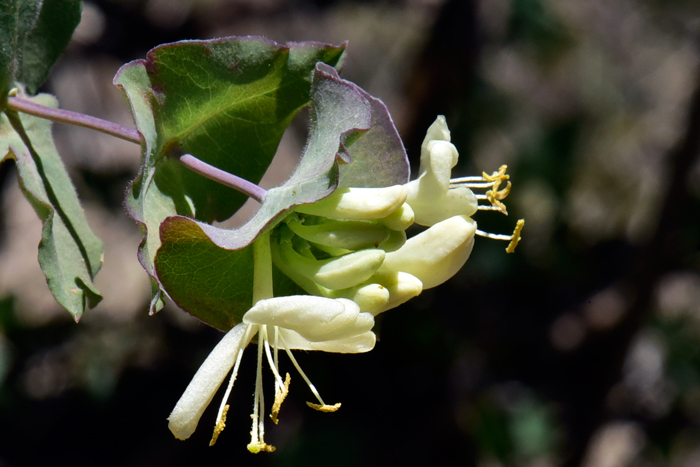
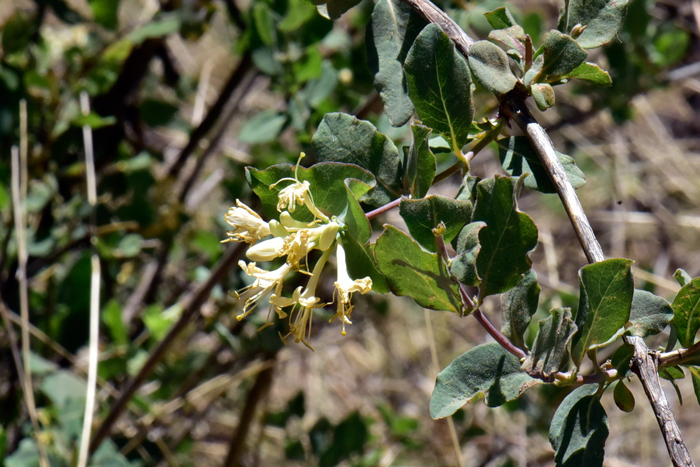
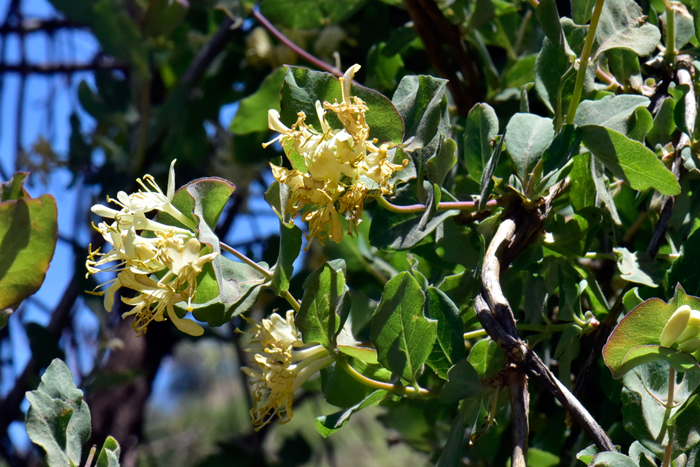
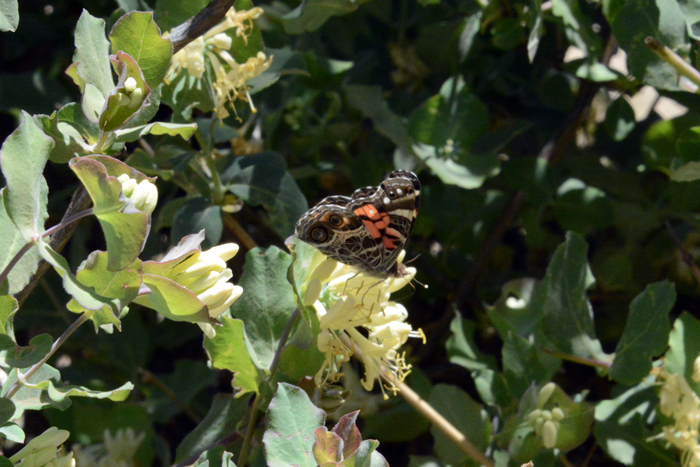
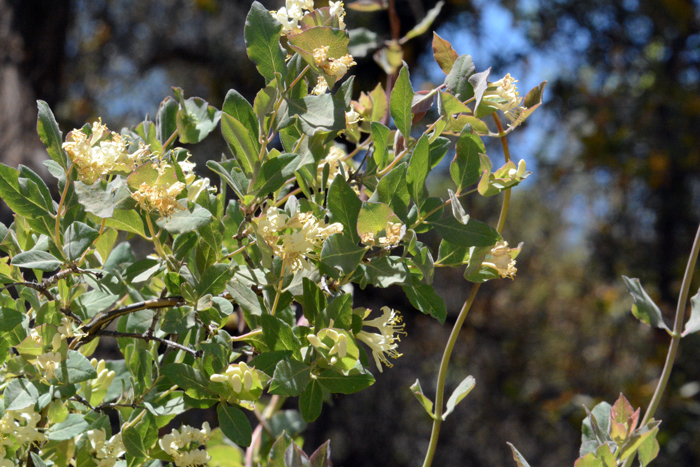
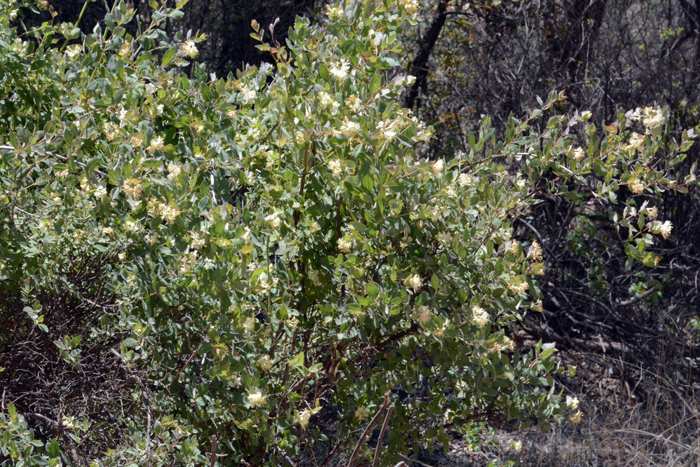
Scientific Name: Lonicera albiflora
Common Name: Western White Honeysuckle
Also Called: Bushy Honeysuckle, Honeysuckle, Texas Honeysuckle, White Bush Honeysuckle, White Honeysuckle, White Limestone Honeysuckle, White Shrub Honeysuckle; Spanish (Madreselva)
Family: Caprifoliaceae, Honeysuckle Family
Synonyms: (Lonicera albiflora var. albiflora, Lonicera albiflora var. dumosa, Lonicera dumosa)
Status: Native
Duration: Perennial
Size: 4 to 10 feet tall (1.3 to 3.1 m) and 3 to 9 feet wide (1 to 3 m).
Growth Form: Shrub trailing or vine; plants stems long and graceful, stems mostly woody, brown to gray or whitish and often shredding, the stems are lightly pubescent or glabrous with maturity.
Leaves: Green; opposite, large about 1½ inches long and ¾ inches wide, margins entire, paired, deciduous; leaf shape variable, broadly oval to orbicular to obovate, leaves with short petioles, uppermost leaves sessile and connate-perfoliate, leaves lightly pubescent under-side (abaxial).
Flower Color: White to cream to pale yellow, showy flowers; whorl of flowers single (crowed multiple flowers appear as one); flowers borne at the ends of short branchlets and the flowers are subtended by the uppermost pair of leaves; fruits clusters of red or orange berries.
Flowering Season: April to June, March through May in Texas; fruiting in October through November.
Elevation: 3,500 to 6,000 feet (1,066.8 to 1,828.8 m)
Habitat Preferences: Along streams and drainages; rocky or sandy soils, usually limestone; Texas habitat preferences include: the Blackland Prairie, sandy soils and Cedar Brakes of Central and North-central Texas and Oklahoma, rocky slopes, limestone outcrops and cliffs of New Mexico, Arizona and Mexico are the preferred habitats of white honeysuckle.
Recorded Range: Western White Honeysuckle is found in the southwestern United States in AZ, NM, OK, TX. It is also native to northern and central Mexico.
North America & US County Distribution Map for Lonicera albiflora.
U.S. Weed Information: No information available.
Invasive/Noxious Weed Information: No information available.
Wetland Indicator: No information available.
Threatened/Endangered Information: No information available.
In the Southwestern United States: Arizona has 7 species of Lonicera, California has 10 species, Nevada has 4 species, New Mexico has 10 species, Texas has 7 species, Utah has 7 species. All data approximate and subject to revision.
Comments: Western White Honeysuckle is distinctive in the orbicular to obovate shape of the leaves which tightly clasp the stems just before the flowering inflorescence.Western White Honeysuckle is very similar in appearance to Chaparral Honeysuckle, Lonicera interrupta but has a slightly larger corolla (larger than 15 mm long), and other technical differences pertaining to the leaves and stems.
In Southwest Desert Flora also see Arizona Honeysuckle, Lonicera arizonica and Chaparral Honeysuckle, Lonicera interrupta.
Additionally according to the Lady Bird Johnson Wildflower Center at The University of Texas, Austin, TX, Lonicera albiflora is valuable to "Nectar-butterflies, Nectar-bees and Nectar-insects". - find more information about Lonicera and butterfly/moth uses check out BOMONA as well as the Xerces Society for Invertebrate Conservation.

